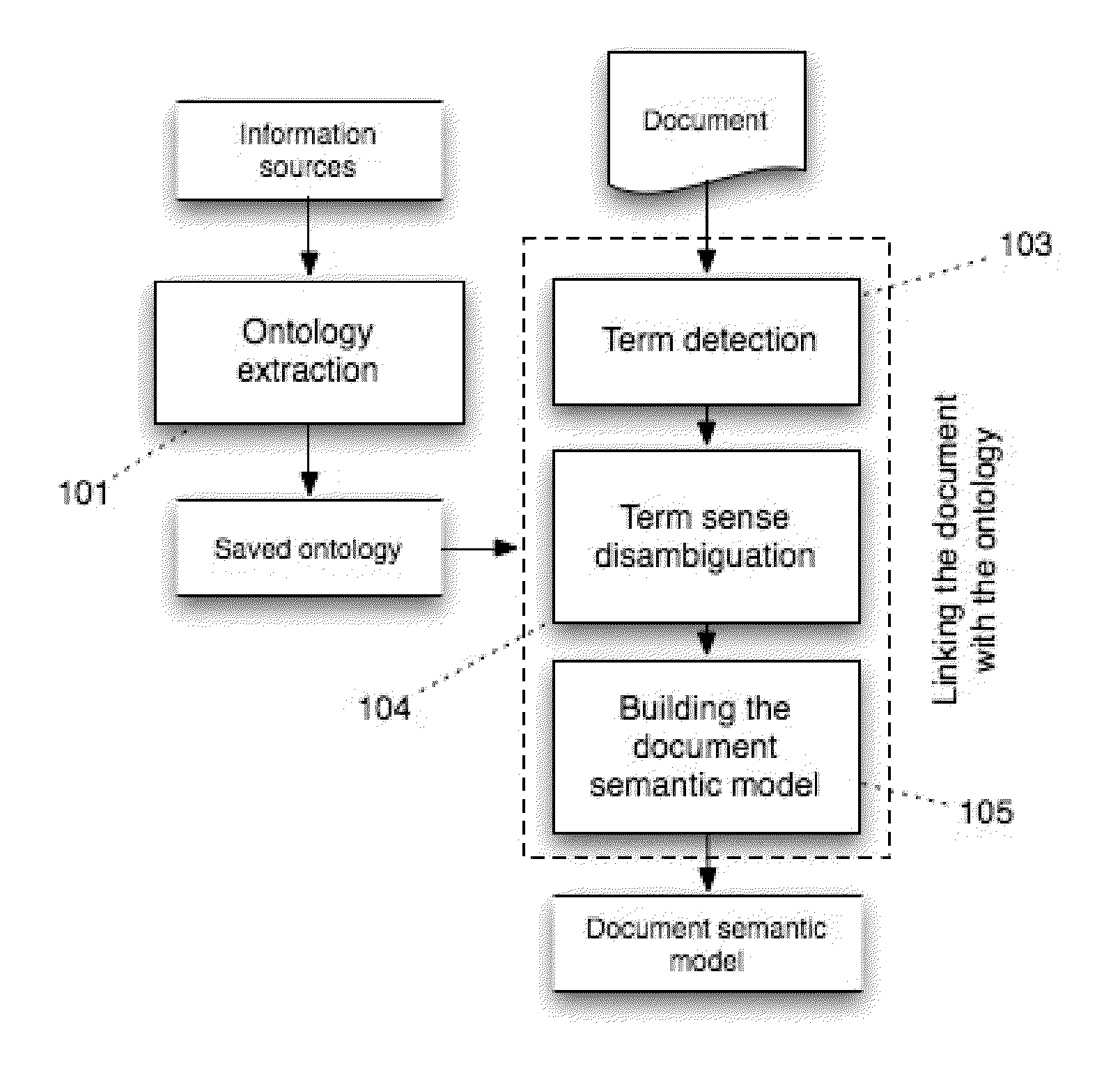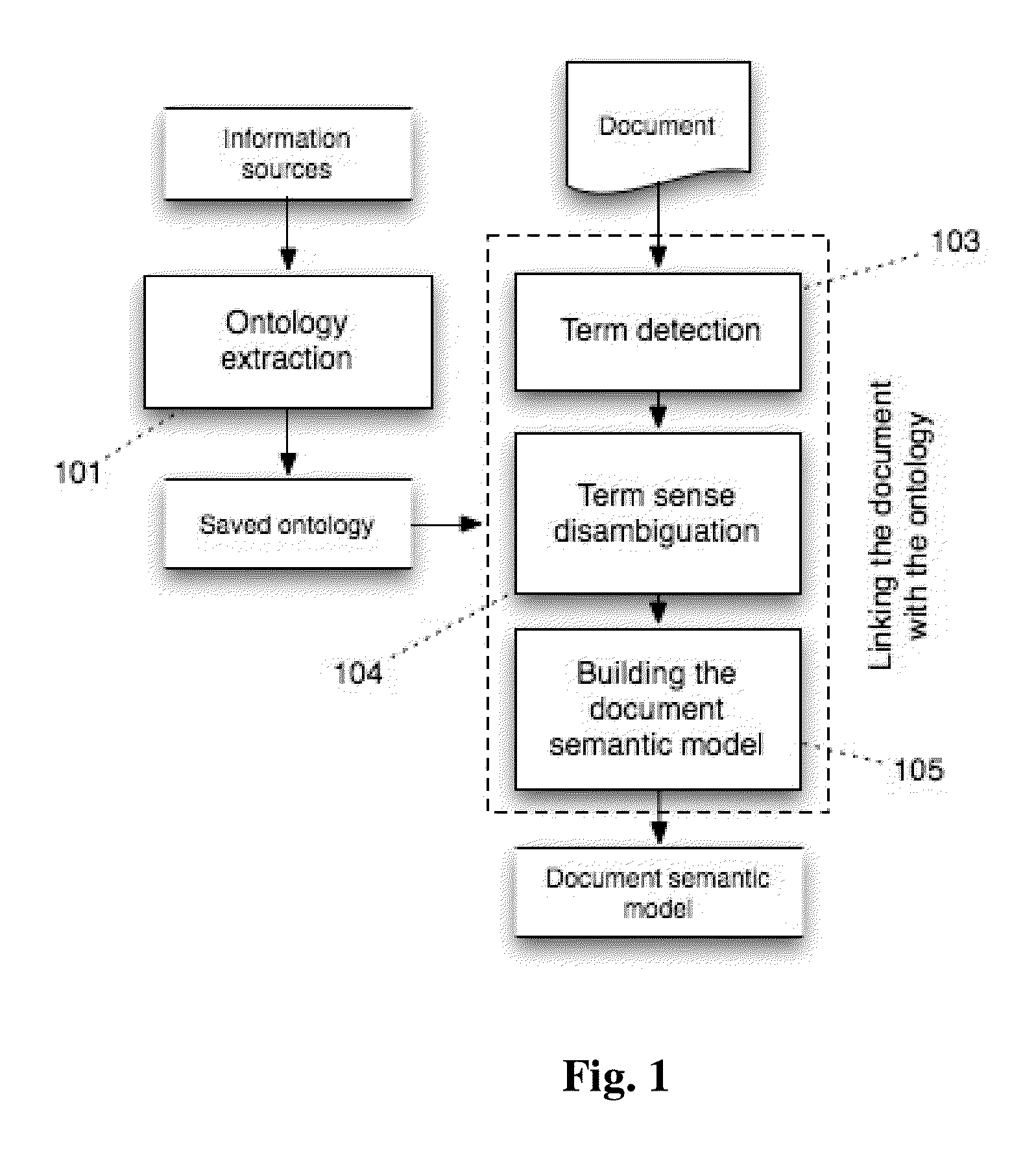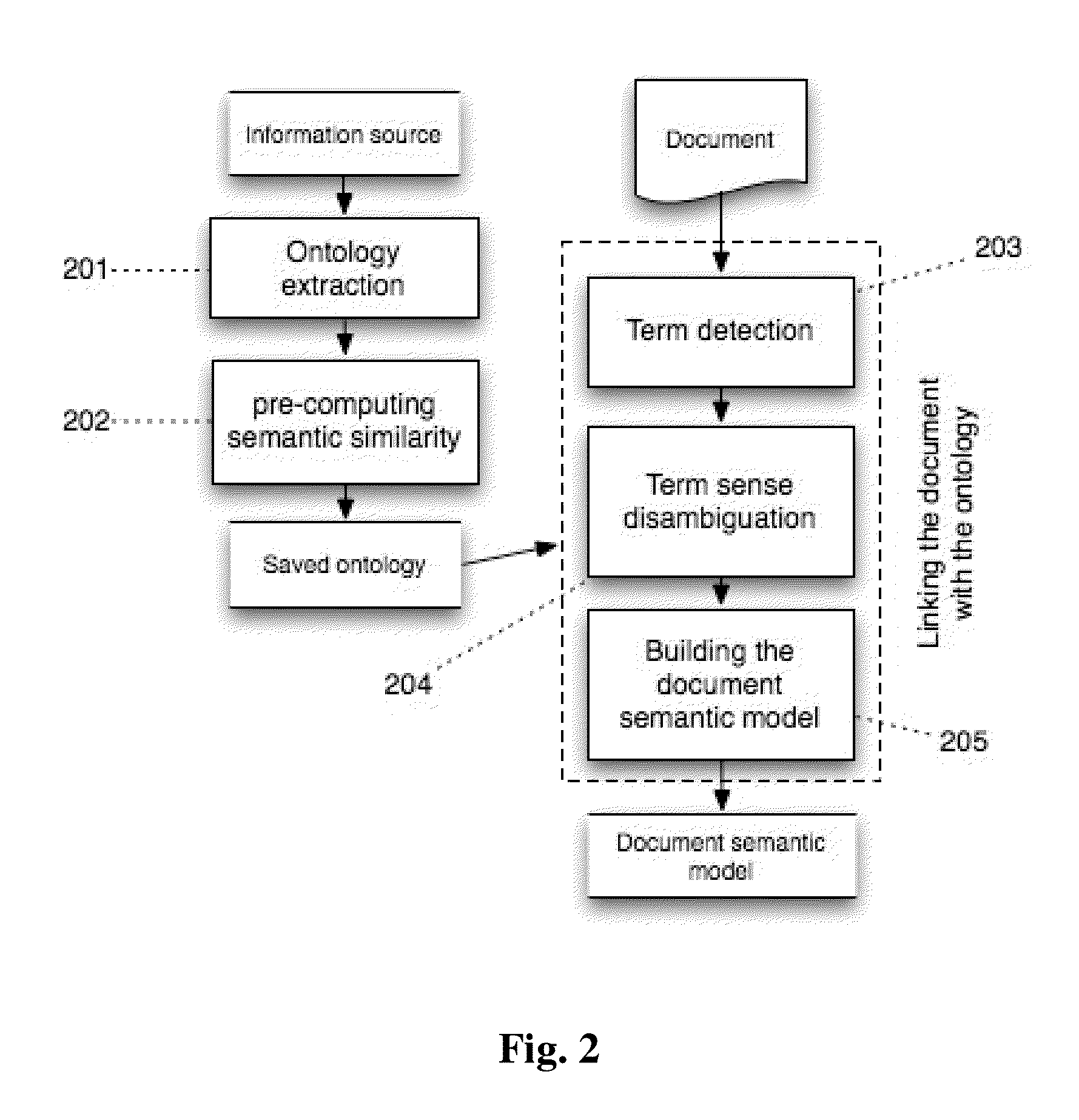Method to build a document semantic model
a document semantic model and model technology, applied in the field of document semantic model building, can solve the problems of lack of immediate search and especially acute feeling of problems, and achieve the effect of limiting the accuracy of algorithms
- Summary
- Abstract
- Description
- Claims
- Application Information
AI Technical Summary
Benefits of technology
Problems solved by technology
Method used
Image
Examples
Embodiment Construction
[0048]The operation of the invention consists of two steps schematically represented in FIG. 1. In step one (101), an ontology is extracted from external information resources. In step two (103-105), the text information in the document is linked to ontology concepts and a document semantic model is built.
[0049]Consider step one of the proposed method: extracting an ontology from external information sources. The sources can be any information resources that contain descriptions of particular domain objects. The further description of step one details the structure of the ontology used in this invention. Thereafter, we consider a processing of various information sources to extract an ontology with a required structure.
[0050]An ontology consists of concepts and links between them. Each concept corresponds to one particular domain object. A link between two concepts signifies only that the concepts are interrelated in some manner. The presence of a more complex semantic link is possi...
PUM
 Login to View More
Login to View More Abstract
Description
Claims
Application Information
 Login to View More
Login to View More - R&D
- Intellectual Property
- Life Sciences
- Materials
- Tech Scout
- Unparalleled Data Quality
- Higher Quality Content
- 60% Fewer Hallucinations
Browse by: Latest US Patents, China's latest patents, Technical Efficacy Thesaurus, Application Domain, Technology Topic, Popular Technical Reports.
© 2025 PatSnap. All rights reserved.Legal|Privacy policy|Modern Slavery Act Transparency Statement|Sitemap|About US| Contact US: help@patsnap.com



